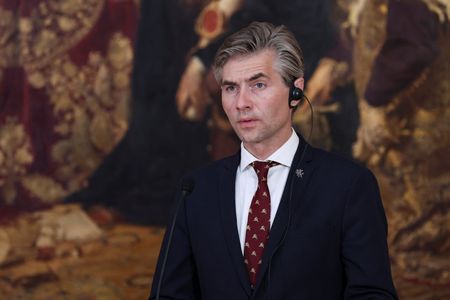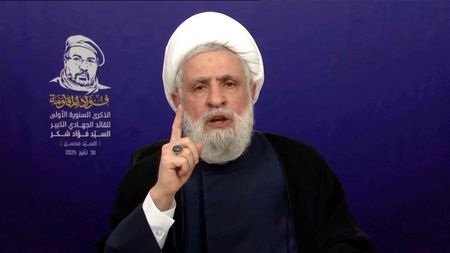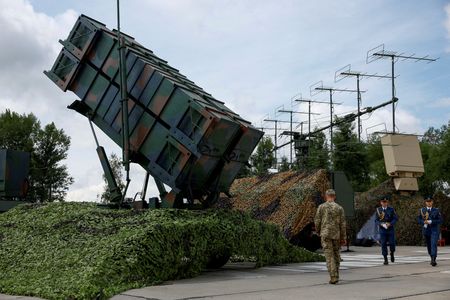By Dmitry Antonov and Mark Trevelyan
MOSCOW (Reuters) -Russia said on Tuesday that it would no longer place any limits on where it deploys intermediate-range missiles that can carry nuclear warheads.
Kremlin spokesman Dmitry Peskov was speaking a day after Russia said it was lifting what it called a unilateral moratorium on deploying intermediate-range missiles, saying this was a forced response to moves by the U.S. and its allies.
“Russia no longer has any restrictions on this matter, Russia no longer considers itself limited by anything,” Peskov told a daily briefing.
“Russia considers itself entitled, if necessary, to take appropriate measures, to take appropriate steps.”
Western security analysts said the “moratorium”, in fact, was long dead, if it had ever existed, but the Russian announcement was intended as an aggressive signal to the West at a time of high tension over the war in Ukraine.
“It sends a message to Europe: don’t forget that we’ve got these missiles,” Nikolai Sokov, a former Soviet and Russian arms control negotiator, said in a telephone interview.
“The whole idea is really to get Europeans to think more about what they plan to do, or to kind of cool them down.”
Sokov said Russia’s announcement was a formality given its deployment of a new intermediate-range hypersonic missile called the Oreshnik, which it test-fired at Ukraine last November.
President Vladimir Putin said last week that the Oreshnik had gone into serial production and been delivered to the armed forces. He has said it will also be deployed in Belarus, a Russian ally which borders three NATO countries. Military analysts say it could be fired with either conventional or nuclear warheads.
HISTORIC TREATY
As the Cold War neared its end, the United States and the Soviet Union agreed a landmark treaty in 1987 to scrap all ground-based shorter-range and intermediate-range (INF) nuclear and conventional weapons, defined as those with ranges between 500 km and 5,500 km.
But the pact, seen at the time as a sign of easing tensions between the rival superpowers, unravelled over time as relations deteriorated. The United States withdrew from the treaty in 2019 during Donald Trump’s first presidency, citing alleged violations that Russia denied.
Against the backdrop of the war in Ukraine, the United States said last year it would start deployment in Germany from 2026 of weapons including SM-6s and Tomahawks, previously placed mainly on ships, and new hypersonic missiles. These are conventional systems but some could also, in theory, be fitted with nuclear tips, and security experts say Russian planning would have to allow for that possibility.
Gerhard Mangott, a Russia expert at the University of Innsbruck in Austria, said the planned deployments of INF missiles in Europe by both NATO countries and Russia signalled a looming arms race. If one side fired such a missile, the other would have only minutes to respond.
“In central Europe, the warning time will be reduced to about four to five minutes, so this makes an unintended nuclear escalation much more likely,” he said in a phone interview.
Since the start of the Ukraine war, Russia has delivered numerous warnings to the West not to intervene directly and risk a nuclear war.
This week, however, Russia played down the significance of an announcement by Trump that he had ordered a re-positioning of U.S. nuclear submarines in response to what he called threatening statements from former Russian president Dmitry Medvedev.
“We do not believe that we are talking about any escalation now. It is clear that very complex, very sensitive issues are being discussed, which, of course, are perceived very emotionally by many people,” Kremlin spokesman Peskov said.
(Reporting by Dmitry Antonov in Moscow and Mark Trevelyan in LondonEditing by Gareth Jones)











